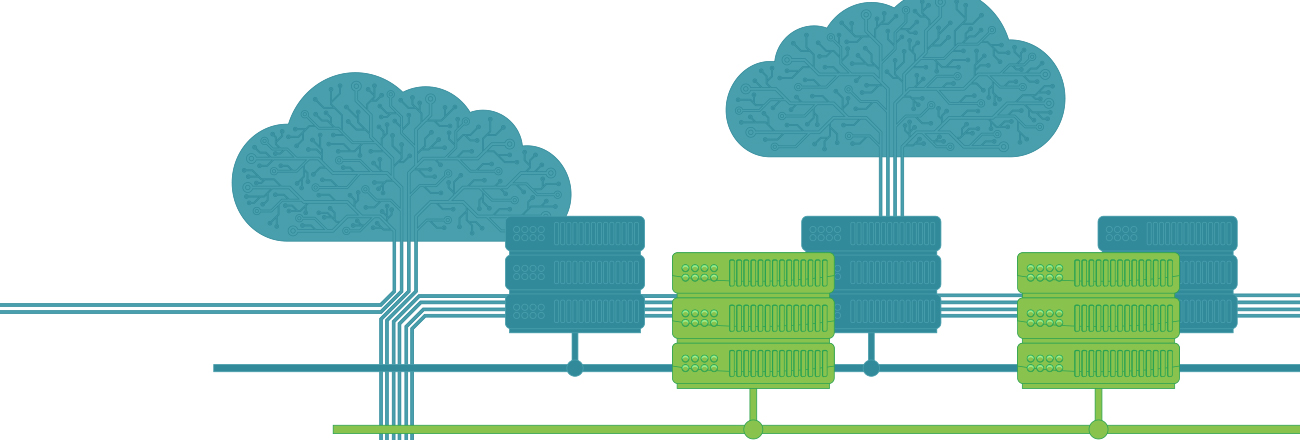Month: May 2012

 Motorsport teams, especially Formula 1, test their cars and equipment as much as they can. Why do the teams test? They do this so they can bring the best possible combination of parts and strategies to the race. Over the past few days, all of the F1 teams have been allowed to bring their cars and equipment to Mugello, Italy to test. This is one time during the race season where official testing on the cars can be performed in real-life conditions. (Meaning not on a simulator or in a wind tunnel.) The teams are limited to only 15,000 km (approx. 9,000 mi) of real world testing per calendar year, which includes both pre-season and current season.
Motorsport teams, especially Formula 1, test their cars and equipment as much as they can. Why do the teams test? They do this so they can bring the best possible combination of parts and strategies to the race. Over the past few days, all of the F1 teams have been allowed to bring their cars and equipment to Mugello, Italy to test. This is one time during the race season where official testing on the cars can be performed in real-life conditions. (Meaning not on a simulator or in a wind tunnel.) The teams are limited to only 15,000 km (approx. 9,000 mi) of real world testing per calendar year, which includes both pre-season and current season.
What exactly is “testing?” It involves bringing in newly designed aerodynamic parts, electronic parts, suspension parts and unseen motor parts to be used in a real-world environment. The cars are carefully measured, weighed and warmed up before each and every session. During every second of every session, multiple sensors from the engine coolant to brake temperatures and more are collected and measured. The measurements take place at the track for quick adjustments and assessments by the team and afterwards, at the factory, where they can do long-term and short-term trend analysis. These measurements allow the team to assess whether a small wing change can give them an advantage over the competition and thereby improve their results and ultimately win races.
The long and short of it is that the teams must test in order to improve their cars, to enhance performance and make gains that keep them ahead of the competition. So just like F1 tests continuously, Internap is always striving to improve its IT managed services for customers. Just take a look at our new Agile Hosting service, for example. After many months of testing, we are now able to offer a dynamic, new online configurator, which allows enterprises to instantly customize and provision both physical and virtual IT Infrastructure needs to meet diverse and rapidly growing demands. Improvements like these mean better performance, and better performance means better results — results that help your organization stay ahead and give you the edge over your competitors today.
Click here to access our new online configurator to provision popular bare-metal configurations in minutes and seamlessly hybridize virtual and physical servers to meet your specific application requirements.
Image Credit: Sahara Force India Formula One Team
Explore HorizonIQ
Bare Metal
LEARN MORE

 1. You rarely like the first taste.
1. You rarely like the first taste.
My first drink of coffee was straight black, without cream or sugar. It was the nastiest thing I ever tasted. Even with cream and sugar, it is definitely an acquired taste. Cloud is very much the same way. If you’ve been running physical servers, you have certain performance expectations, and cloud might not come through in the same way. But once you get past that first taste and better understand it, you’ll start to like it. Just don’t pour cream and sugar into your cloud. That would not be good.
2. Once you start using it regularly, you’re addicted.
Caffeine is an addictive substance and causes your body to crave it. The more you drink it, the more you need it. Likewise, once you start learning how to move workloads into the cloud, you start to like the “on-demand” nature of it. Servers that once took days to install now take mere minutes. Software that took substantial configuration can be cloned and imaged for exact copies across multiple servers. You start showing off how quickly you can get that application up and running, and next thing you know… you want to use the cloud for EVERYTHING!
3. Too much will make you jittery.
I occasionally drink too much coffee. Actually, I do it all the time. Coffee jitters are a bummer. So are cloud jitters. Once you’ve moved all your servers into a public cloud, you start to wonder if your cloud provider is going to have an outage. You get nervous about security. You no longer have physical access to your environment. You start thinking it’s all a mistake. Your hands start shaking, your voice trembles and you’re a nervous wreck. You get jumpy when someone at the water cooler asks you how all the migrations are going. Why? Did something just go down? Is something not working right? Did I remember to turn off the dev server that I’m paying for hourly? You can reduce the jitters by keeping your cloud consumption down. Before you buy too much, figure out how much you really need. Figure out what you can offload to the cloud and what you need to keep with a service provider (or in-house) where you have more control. This will reduce the uncertainty and the jitters.
4. You won’t know if you like the new variety until you taste it.
At home, I buy whole bean coffee and grind it up in small batches. When I find a particular roast I like, I tend to drink the same type for a long time. But every once in a while, I need to change it up. What to choose? Colombian? Hawaiian Kona? Guatemalan? French Roast? I don’t know if I’m going to like the one I’m about to buy. It usually turns out to be pretty good. After you get the cloud jitters (see above), you might be tempted to switch. But which one? Will it support your applications? How quickly can new instances come online? Can you use your current images, or do you have to make new ones? Does it handle volumes the same way? Will its storage model fit your requirements? It’s enough to give you hesitation, but once you give the new one a try, you might just like the flavor.
5. You can get it anywhere, anytime.
You can’t throw a brick without hitting a Starbucks®. There are also a number of other coffee chains, independent coffee shops, gas stations, restaurants, grocery stores, etc. There is absolutely no reason to be without access to coffee, ever. Likewise, you can get your cloud fix anytime you need it. On-demand network access to infrastructure and applications gives you round-the-clock cloud resources from anywhere you have an Internet connection. If you are near a human population, there is no reason to be without access to your cloud service while you sip your coffee.
Coffee is a commodity product, and so is cloud. But while you can buy coffee anywhere, the best tasting coffee comes from a premium roaster, who obtains and roasts the best beans. Likewise, you can get cloud anywhere, but you’ll really appreciate the premium taste from a top-notch cloud service provider.
Enjoy a cup of coffee, and try some cloud today!
For more information on determining if cloud is right for you, download our eBook, The Top 5 Mistakes You Want to Avoid When Becoming a Cloud Superhero.
Explore HorizonIQ
Bare Metal
LEARN MORE


Stretched to the max? Running out of room? Carrying around the weight of the world?
Sound like you? Sound like your IT systems?
The good news is it isn’t all bad news. You could be suffering from these symptoms because your business is booming! But keeping up with all the growth can be challenging. Your IT systems are just one cog in the wheel for you, your organization and your employees to keep pace. How in the world can you handle all of it?
Enter your very own cloud superhero! Ok, maybe not. But how about an eBook that provides tips and the top 5 mistakes to avoid when deploying cloud to address your “bursting at the seams” needs? Or one of the articles in my mashup this week that speaks to trends, new offerings and other ways to “trim the fat.”
- Going native: The move to bare-metal cloud services
- Beyond the Cloud Hype: Hybridization Delivers Workload-Centric Cost Efficiency and Agility
- Cloud computing helps IT keep up with current trends
- Top Five Private Cloud Computing Trends, 2012
- Selecting the right cloud: A step-by-step guide
Ideally, some of these articles will help you set your information technology priorities. But, we’d really be interested in knowing what concerns you most and how you are addressing it.
Information overload? Well, that’s another story…
Explore HorizonIQ
Bare Metal
LEARN MORE

 If you’ve already read part one and part two of this series, you should now be an expert on Content Delivery Networks (CDNs) and Transmission Control Protocol (TCP) acceleration. All right, maybe not an expert, but close. So, let’s tie it all together. As a follow-up to parts one and two, we’ll take a look at a CDN workflow use case to see why coordinated acceleration across the entire CDN is necessary to enhance performance.
If you’ve already read part one and part two of this series, you should now be an expert on Content Delivery Networks (CDNs) and Transmission Control Protocol (TCP) acceleration. All right, maybe not an expert, but close. So, let’s tie it all together. As a follow-up to parts one and two, we’ll take a look at a CDN workflow use case to see why coordinated acceleration across the entire CDN is necessary to enhance performance.
The use case involves a CDN customer that wants to deliver a video file to mobile devices and PCs using Adaptive Bit Rate (ABR) technology over HTTP. The video file is originally delivered as an AVI file that needs uploading and transcoding into a format that the transmuxing platform can ingest. This upload is performed using File Transfer Protocol (FTP). The file is 150MB and is a short form, high-quality piece of content, approximately three minutes in length.
After uploading the video, it is then pushed to CDN origin servers worldwide. When this piece of content is requested from a specific location in the world (let’s say Germany), the CDN service geo-locates the individual user and routes the user’s request to the correct Point of Presence (POP). Assuming the content is delivered as HTTP Adaptive Bitrate Media, the video player chooses the specific and appropriate bitrate based on the user’s available bandwidth. The content is then transmuxed and consumed by the requesting device in Germany.
This transaction has a number of places where acceleration can occur. First, the upload of the media file can benefit from acceleration. Large media files are perfect candidates for a number of types of acceleration. However, large numbers of smaller files can also be accelerated when uploading to a CDN. Either way, acceleration helps to alleviate some of the burden associated with loading many small files or very large files. This use case is an example of ideal synchronous acceleration. However, even if only asynchronous acceleration is applied, the acceleration can make a huge difference.
Second, the movement of files to the “staging” portion of the CDN can be accelerated. Whether this is tiered origin storage or just regional origin, moving these files is onerous to the network and can, if done poorly, result in delivery delays. Most CDNs apply some form of WAN acceleration here, especially for intra-regional traffic. Again, this is an area that is well suited to synchronous acceleration since the CDN controls both sides of the transaction.
The last area is the delivery of the video to the device. This portion of the transaction is somewhat different from the other two areas because it involves a very wide variety of devices that are by nature not predictable. In most cases, there can be no client software. As a result, it’s more likely this would be a candidate for asynchronous acceleration.
In today’s environment, a poor online experience is a prescription for failure. Businesses must go further to create a rich and engaging online presence that exceeds the expectations of the customers and consumers of their content. A CDN is an effective and essential way of creating a satisfying Internet user experience. It’s a highly flexible option that addresses a wide range of needs − making it possible, for example, to simulate a broadcast video network over the Internet, cache entire websites or deliver large files to users across the globe. Market drivers such as the increase in video content, growth in Internet traffic and the proliferation of mobile devices will drive CDNs to be an ongoing study in acceleration. TCP acceleration represents an opportunity for providers to significantly increase the performance that CDNs currently provide. By optimizing each layer of the upload and delivery process, the end-user experience will be exponentially enhanced resulting in customers being drawn to content over and over again.
Ready to try out an optimized CDN for yourself? Well, we might be able to recommend one… 🙂 And as an added bonus – you can try it for free! Sign up for a 30-day free trial of Internap’s global CDN with built-in patented route-optimization and TCP acceleration.
Explore HorizonIQ
Bare Metal
LEARN MORE

 In my last post, I got you up to speed on Content Delivery Networks (CDNs) and Transmission Control Protocol (TCP) acceleration. Now, I’ll take you through how TCP acceleration can be applied to three areas of a CDN network.
In my last post, I got you up to speed on Content Delivery Networks (CDNs) and Transmission Control Protocol (TCP) acceleration. Now, I’ll take you through how TCP acceleration can be applied to three areas of a CDN network.
- Ingest into the CDN
Getting content into the CDN can be a painful process if you have massive amounts of large content. Strategies like RYNC and FTP drop folders, which are used to manage the ingress of content, are common. Upload managers that utilize UDP and other forms of acceleration are also available for the purpose of getting very large files into the CDN. For a website that uses a CDN, the ability to set up Origin Pull (Origin Pull is the method of transferring data to the CDN automatically from a web server as opposed to manually uploading the content) alleviates some of this pain; however, the interface for Origin Pull must be sophisticated enough to allow the operator to control the cache headers in order to make the site perform correctly.

- Intra-CDN communication
Many CDNs incorporate acceleration between Points of Presence (POPs). This is often a form of WAN acceleration, which can take advantage of “both sides” of the communication chain. As a result, CDNs can be optimized even further. (Generally, symmetrical acceleration is better than asymmetrical acceleration since the former can compress the content in ways that cannot be done by the latter). For example, replication of the content from North America to Europe or to the Pacific-Rim region is a perfect use case for this type of acceleration. Without acceleration, the files can take too long to get to their destination.
- Egress acceleration
Egress acceleration is perhaps the most compelling area to apply acceleration within a CDN. Why? Because egress acceleration can have the most impact on a CDN’s users. Users surfing a website or downloading a multiplayer online game experience the advantage of the acceleration directly. For instance, TCP acceleration in this part of the CDN value chain has been found to accelerate the download of a large file over a high-latency connection by up to four times. In real numbers that translates to downloading a 1MB file over a 200ms connection up to four seconds faster. While this may not seem significant, four seconds is an appreciable period of time on the Internet, and in most cases is more than enough time for a user to become impatient and close their browser window.
Be sure to stay tuned for my third and final post on CDN and why TCP acceleration matters next Tuesday, which will take you through an actual use case. In the meantime, check out our CDN Buyer’s Guide eBook
Explore HorizonIQ
Bare Metal
LEARN MORE

 I often get asked about how a Content Delivery Network (CDN) works and how companies can get the most use out of this service. In my three-part post, I will be answering those questions and explaining several ways to optimize the performance of a CDN. To begin, I’ll discuss what CDN and Transmission Control Protocol (TCP) acceleration technologies are and why optimization is important. In part two, I’ll explain how TCP acceleration applies to a CDN, and finally in part three I’ll take you through a use case that brings it all together.
I often get asked about how a Content Delivery Network (CDN) works and how companies can get the most use out of this service. In my three-part post, I will be answering those questions and explaining several ways to optimize the performance of a CDN. To begin, I’ll discuss what CDN and Transmission Control Protocol (TCP) acceleration technologies are and why optimization is important. In part two, I’ll explain how TCP acceleration applies to a CDN, and finally in part three I’ll take you through a use case that brings it all together.
What is a CDN?
A CDN is a cloud application built to deliver data faster to higher volumes of users across the world – whether it’s audio or video files, websites, game downloads, software patches or live streaming. Its goal is to accelerate content delivery and make it more scalable. This in turn contributes to a superior experience for end users and keeps them returning to your websites and online stores.
What is TCP Acceleration?
When TCP was introduced nearly 40 years ago, it was designed to facilitate reliable communication between two hosts. However, networks now operate at much higher speeds and regularly span much larger distances between the application origin and the end user, creating the need for a technology called TCP acceleration. Acceleration generally works at the TCP layer in one of two ways: symmetrical or asymmetrical. Symmetrical acceleration requires either two acceleration devices, one at each end of a network link, or a central acceleration device and client software that live at the end nodes. Asymmetrical acceleration has no dependency for a client device or software, rather it works from the server side alone. Typically, symmetrical acceleration performs better than asymmetrical, since it can compress the content in ways that cannot be done otherwise.
Why is optimization important?
While CDNs inherently accelerate content, the explosion of bandwidth-intensive data traveling over the Internet and the more global distribution of customers, is exposing the need to increase speed and address latency challenges within specific points on a CDN network. In fact, Cisco predicts by 2015, one million minutes of video content will traverse the Internet every second.* In order to prepare for this surge in content, every component of a CDN must be optimized − from uploading content to the final delivered “bit” of a game download. The elements that make up a CDN must perform in harmony to create the lowest-latency experience possible.
One aspect of the CDN that is often overlooked is the TCP layer of the network. CDNs, for the most part, move all their bits across TCP/IP, and both HTTP and RTMP traffic moves across this transport layer. By accelerating this layer to perform at its peak potential, fundamental design limitations of TCP that regulate and diminish web traffic performance can be overcome, allowing the CDN to achieve heightened performance.
Whew, a lot to digest huh? While you let that marinate, skim our State of CDN and WTH is Up With Your WPO infographics, which take you through the 1-2-3 of CDN and other website performance optimization technologies. Then check back here tomorrow as I detail how TCP acceleration applies to the CDN.
*www.streamingmedia.com, “Cisco, RealNetworks, Adobe, Harmonic: Adaptive Streaming and HTTP,” July 26, 2011.
Explore HorizonIQ
Bare Metal
LEARN MORE


For this week’s mashup I “Googled,” Binged,” “[insert search engine here]” the phrase “what is success?” The first result on the page was obvious: the dictionary definition of success, following that was a website: www.what-is-success.com, which is a book promo site, and then an ezinearticle: “What is Success and How Do We Achieve it?” Here’s what the author had to say:
“To be clear about what success is must be the first step to achieving success.
So far, the best definition I have come across is: “Success is the completion of anything intended.” In other words success is finishing what you planned to do. Even robbing a bank is a kind of success if that is what you wished to do. However, you probably did not intend to end up in prison!
The above definition of success shines a light on failure and success. Make a plan and follow it and you will have succeeded. Make a plan and do not follow it and you will have failed. …”
This, in turn, led me to thinking about how industry leaders define success, what IT solutions do successful businesses use, how do our own customers use IT to achieve their success, etc. Here’s my mashup on success:
- CIO Announces the 2012 CIO Hall of Fame Inductees and CIO Ones to Watch Award Honorees
- Achieving high-power densities in colocation environments
- Disaster Recovery Solutions guarantee protection of critical data
- Have a plan
- Prior planning pervades cloud success projects
- Disaster Recovery Planning Keys to Success
If you are interested in reading about some of our customers’ successes in solving their IT business needs, we have compiled a dozen case studies in this eBook. Enjoy reading, and let me know if you have any thoughts on how to define/achieve success.


